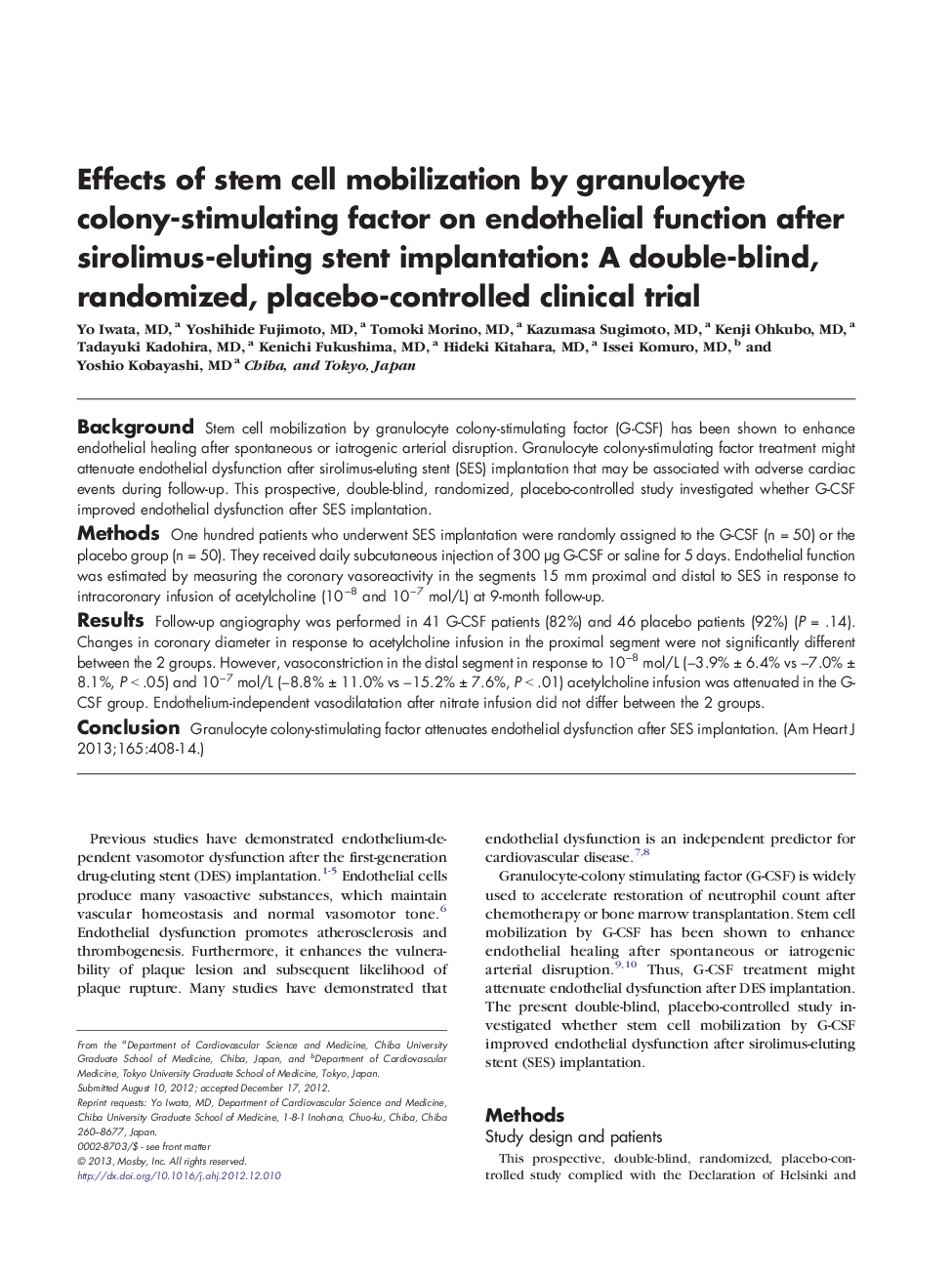| Article ID | Journal | Published Year | Pages | File Type |
|---|---|---|---|---|
| 2849476 | American Heart Journal | 2013 | 7 Pages |
BackgroundStem cell mobilization by granulocyte colony-stimulating factor (G-CSF) has been shown to enhance endothelial healing after spontaneous or iatrogenic arterial disruption. Granulocyte colony-stimulating factor treatment might attenuate endothelial dysfunction after sirolimus-eluting stent (SES) implantation that may be associated with adverse cardiac events during follow-up. This prospective, double-blind, randomized, placebo-controlled study investigated whether G-CSF improved endothelial dysfunction after SES implantation.MethodsOne hundred patients who underwent SES implantation were randomly assigned to the G-CSF (n = 50) or the placebo group (n = 50). They received daily subcutaneous injection of 300 μg G-CSF or saline for 5 days. Endothelial function was estimated by measuring the coronary vasoreactivity in the segments 15 mm proximal and distal to SES in response to intracoronary infusion of acetylcholine (10−8 and 10−7 mol/L) at 9-month follow-up.ResultsFollow-up angiography was performed in 41 G-CSF patients (82%) and 46 placebo patients (92%) (P = .14). Changes in coronary diameter in response to acetylcholine infusion in the proximal segment were not significantly different between the 2 groups. However, vasoconstriction in the distal segment in response to 10−8 mol/L (−3.9% ± 6.4% vs −7.0% ± 8.1%, P < .05) and 10−7 mol/L (−8.8% ± 11.0% vs −15.2% ± 7.6%, P < .01) acetylcholine infusion was attenuated in the G-CSF group. Endothelium-independent vasodilatation after nitrate infusion did not differ between the 2 groups.ConclusionGranulocyte colony-stimulating factor attenuates endothelial dysfunction after SES implantation.
